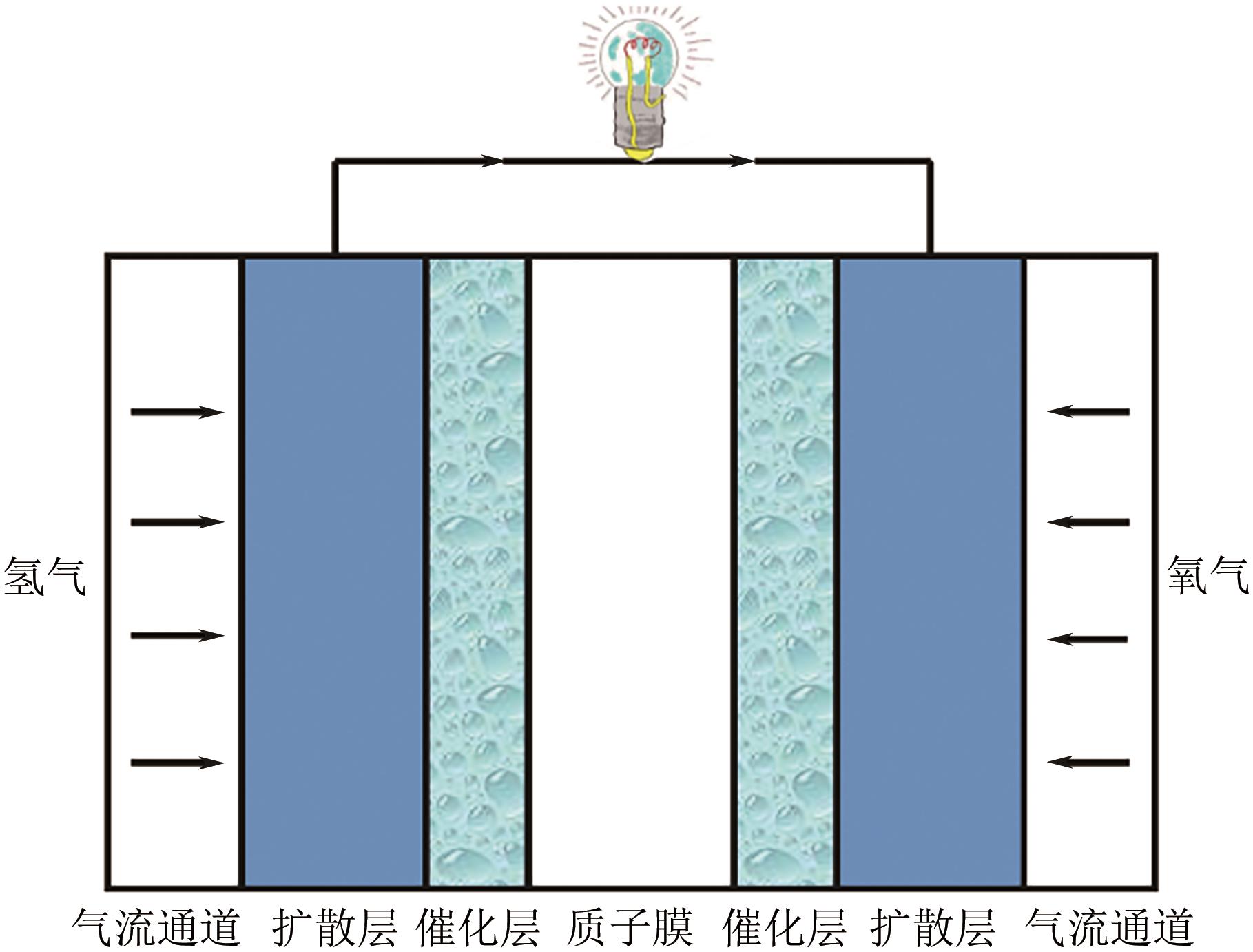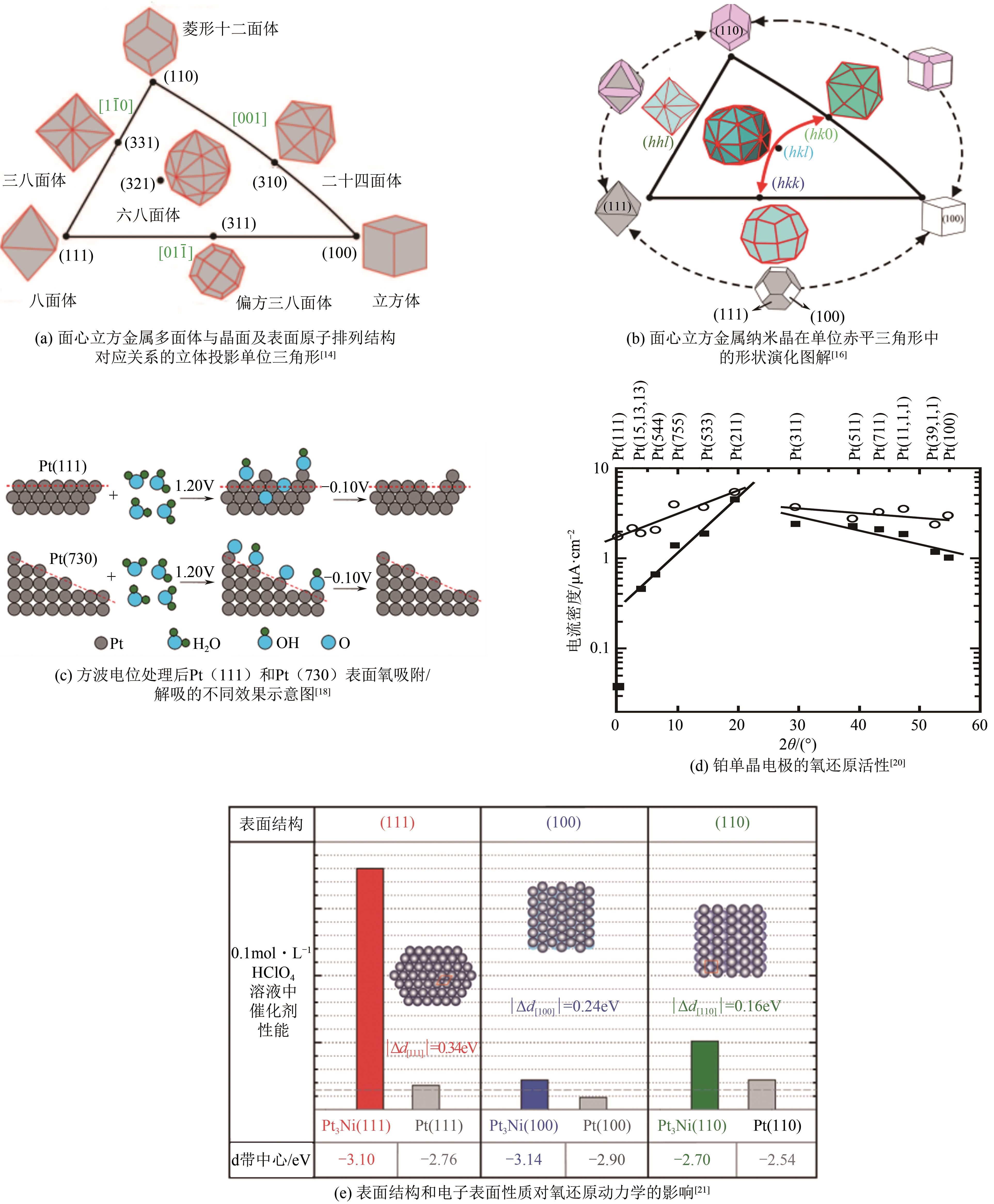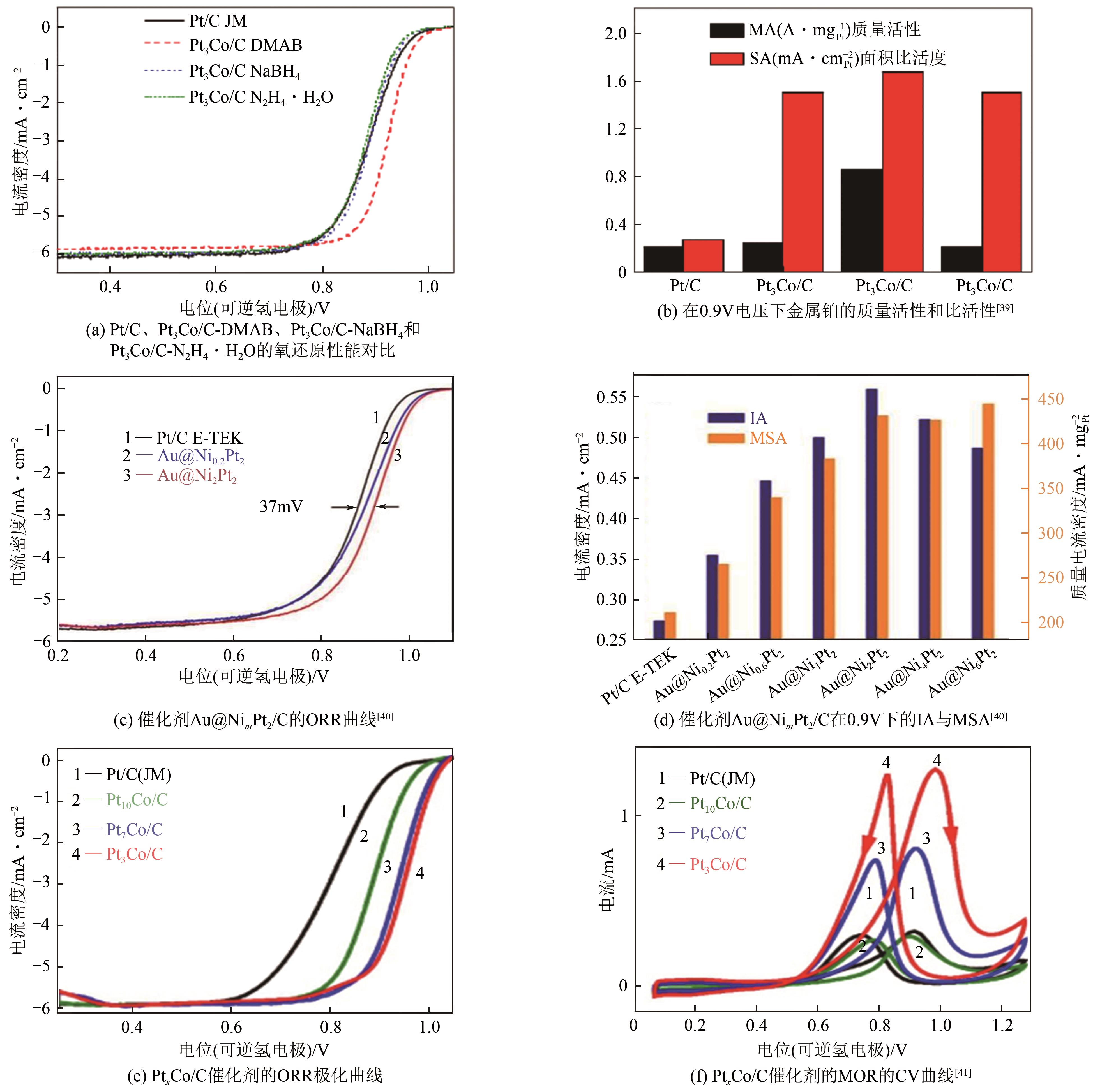| 1 |
SUN H. Recent advances in Pt-based ordered intermetallic catalysts for oxygen reduction reaction[J]. Material Sciences, 2019, 9(5):479-488.
|
| 2 |
CHENG F, SU Y, LIANG J, et al. MnO2-based nanostructures as catalysts for electrochemical oxygen reduction in alkaline media[J]. Chemistry of Materials, 2014, 22(3): 898-905.
|
| 3 |
ZHANG H, SHEN P K. Recent development of polymer electrolyte membranes for fuel cells[J]. Chemical Reviews, 2012, 112(5): 2780-2832.
|
| 4 |
YANG W, LIU X, YUE X, et al. Bamboo-like carbon nanotube/Fe3C nanoparticle hybrids and their highly efficient catalysis for oxygen reduction[J]. Journal of the American Chemical Society, 2015, 137(4): 1436.
|
| 5 |
ZHU J, XIAO M, LIU C, et al. Growth mechanism and active site probing of Fe3C@N-doped carbon nanotubes/C catalysts: guidance for building highly efficient oxygen reduction electrocatalysts[J]. Journal of Materials Chemistry A, 2015, 3(43): 21451-21459.
|
| 6 |
KATSOUNAROS I, CHEREVKO S, ZERADJANIN A R, et al. Oxygen electrochemistry as a cornerstone for sustainable energy conversion[J]. Angewandte Chemie International Edition, 2014, 53(1): 102-121.
|
| 7 |
PETRII O A, TSIRLINA G A. Electrocatalytic activity prediction for hydrogen electrode reaction: intuition, art, science[J]. Electrochimica Acta, 1994, 39: 1739-1747.
|
| 8 |
LI J, CHEN Y, TANG Y, et al. Metal-organic framework templated nitrogen and sulfur co-doped porous carbons as highly efficient metal-free electrocatalysts for oxygen reduction reactions[J]. Journal of Materials Chemistry A, 2014, 2(18): 6316-6319.
|
| 9 |
ROOTSAERT W J M, SACHTLER W M H. Interaction of formic acid vapour with tungsten[J]. Zeitschrift Für Physikalische Chemie, 1960, 26(1/2): 16-26.
|
| 10 |
NØRSKOV J K, ROSSMEISL J, LOGADOTTIR A, et al. Origin of the overpotential for oxygen reduction at a fuel-cell cathode[J]. Journal of Physical Chemistry B, 2004, 108(46): 17886-17892.
|
| 11 |
HAO L, ZHANG S, LIU R, et al. Bottom-up construction of triazine-based frameworks as metal-free electrocatalysts for oxygen reductionreaction[J]. Advanced Materials, 2015, 27(20): 3190-3195.
|
| 12 |
STAMENKOVIC V R, MUN B S, ARENZ M, et al. Trends in electrocatalysis on extended and nanoscale Pt-bimetallic alloy surfaces[J]. Nature Materials, 2007, 6(3): 241-247.
|
| 13 |
MARKOVIC N M, GASTEIGER H A, ROSS P N. Oxygen reduction on platinum low-index single-crystal surfaces in alkaline solution: rotating ring disk Pt(hkl) studies[J]. Journal of Physical Chemistry, 1996, 99(11): 6715-6721.
|
| 14 |
ZHOU Z Y, TIAN N, HUANG Z Z, et al. Nanoparticle catalysts with high energy surfaces and enhanced activity synthesized by electrochemical method[J]. Faraday Discussions, 2008, 140(1): 81-92.
|
| 15 |
FLEISCHMANN M, PLETCHER D, DENUAULT G, et al. The behavior of microdisk and microring electrodes: prediction of the chronoamperometric response of microdisks and of the steady state for CE and EC catalytic reactions by application of Neumann’s integral theorem[J]. Journal of Electroanalytical Chemistry & Interfacial Electrochemistry, 1989, 263(2): 225-236.
|
| 16 |
XIAO J, LIU S, TIAN N, et al. Synthesis of convex hexoctahedral Pt micro/nanocrystals with high-index facets and electrochemistry-mediated shape evolution[J]. Journal of the American Chemical Society, 2013, 135(50): 18754-18757.
|
| 17 |
SUN S D, ZHANG X, CUI J, et al. High-index faceted metal oxide micro-/nanostructures: a review on their characterization, synthesis and applications[J]. Nanoscale, 2019, 11(34): 15739-15762.
|
| 18 |
TIAN N, ZHOU Z Y, SUN S G, et al. Synthesis of tetrahexahedral platinum nanocrystals with high-index facets and high electro-oxidation activity[J]. Science, 2007, 316(5825): 732-735.
|
| 19 |
MARKOVIC N M, GASTEIGER H A, P Net al ROSS. Oxygen reduction on platinum low-index single-crystal surfaces in sulfuric acid solution: rotating ring-Pt(hkl) disk studies[J]. The Journal of Physical Chemistry, 1995, 99(11): 3411-3415.
|
| 20 |
MACIA M D, CAMPINA J M, HERRERO E, et al. On the kinetics of oxygen reduction on platinum stepped surfaces in acidic media[J]. Journal of Electroanalytical Chemistry, 2004, 564: 141-150.
|
| 21 |
STAMENKOVIC V R, FOWLER B, MUN B S, et al. Improved oxygen reduction activity on Pt3Ni (111) via increased surface site availability[J]. Science, 2007, 315(5811): 493-497.
|
| 22 |
YEAGER E. Electrocatalysts for O2 reduction[J]. Electrochimica Acta, 1984, 29(11): 1527-1537.
|
| 23 |
MARKOVI N M, ADI R R, CAHAN B D, et al. Structural effects in electrocatalysis: oxygen reduction on platinum low index single-crystal surfaces in perchloric acid solutions[J]. Journal of Electroanalytical Chemistry, 1994, 377(1/2):249-259.
|
| 24 |
LI W, HU Z Y, ZHANG Z, et al. Nano-single crystal coalesced PtCu nanospheres as robust bifunctional catalyst for hydrogen evolution and oxygen reduction reactions[J]. Journal of catalysis, 2019, 375: 164-170.
|
| 25 |
WU R, TSIAKARAS P, SHEN P K. Facile synthesis of bimetallic Pt-Pd symmetry-broken concave nanocubes and their enhanced activity toward oxygen reduction reaction[J]. Applied Catalysis B: Environmental, 2019, 251: 49-56.
|
| 26 |
YU T, KIM D Y, ZHANG H, et al. Platinum concave nanocubes with high-index facets and their enhanced activity for oxygen reduction reaction[J]. Angewandte Chemie, 2011, 123(12): 2825-2829.
|
| 27 |
陈瑞. 铂纳米粒子形貌的调控及其电化学性能研究[D]. 昆明: 昆明理工大学, 2018.
|
|
CHEN R, Platinum nanoparticles morphology control and its electrochemical performance study[D]. Kunming: Kunming University of Science and Technology, 2018.
|
| 28 |
南皓雄, 党岱, 田新龙. 低铂燃料电池氧还原催化剂的制备技术研究进展[J]. 化工进展, 2018, 37(11): 179-187.
|
|
NAN H X, DANG D, TIAN X L. Recent progress in the preparation of oxygen reduction catalysts for low-platinum fuel cell[J]. Chemical Industry and Engineering Progress, 2018, 37(11): 179-187.
|
| 29 |
SHARMA R, KAR K K. Particle size and crystallographic orientation controlled electrodeposition of platinum nanoparticles on carbon nanotubes[J]. Electrochimica Acta, 2015, 156: 199-206.
|
| 30 |
于迎涛, 徐柏庆. 前驱体水解对纳米铂形状控制合成的影响[J]. 化学学报, 2003,61(11): 1578-1764.
|
|
YU Y T, XU B Q, Effect of precursor hydrolysis on shape-controlled synthesis of Pt nanocrystals[J]. Acta Chimica Sinica2003, 61(11): 1578-1764.
|
| 31 |
CAI Y, MA C, ZHU Y, et al. Low-coordination sites in oxygen-reduction electrocatalysis: their roles and methods for removal[J]. Langmuir, 2011, 27(13): 8540-8547.
|
| 32 |
YU Y T, XU B Q. Shape-controlled synthesis of Pt nanocrystals: an evolution of the tetrahedral shape[J]. Applied Organometallic Chemistry, 2006, 20(10): 638-647.
|
| 33 |
曹龙生, 万磊, 邵志刚,等. PtCu2八面体形貌调控及氧还原电催化性能研究[J]. 电化学, 2018, 24(6): 130-139.
|
|
CAO L S, WAN L, SHAO Z G, et al. Morphological control of PtCu2 octahedron and oxygen reduction electrocatalytic performance of PtCu for fuel cell[J]. Journal of Electrochemistry, 2018, 24(6): 130-139.
|
| 34 |
WANG D, HU G, YANG P, et al. Using DMH as a complexing agent for pulse electrodeposition of platinum nanoparticles towards oxygen reduction reaction[J]. Ionics, 2020, 26(2):1-10.
|
| 35 |
CHEN D H, YE J Y, XU C D, et al. Interaction of citrate with Pt(100) surface investigated by cyclic voltammetry towards understanding the structure-tuning effect in nanomaterials synthesis[J]. Science China (Chemistry), 2012(11): 119-124.
|
| 36 |
FU G, WU K, LIN J, et al. One-pot water-based synthesis of Pt-Pd alloy nanoflowers and their superior electrocatalytic activity for the oxygen reduction reaction and remarkable methanol-tolerant ability in acid media[J]. Journal of Physical Chemistry C, 2013, 117(19): 9826-9834.
|
| 37 |
SAFO I A, WERHEID M, DOSCHE C, et al. The role of polyvinylpyrrolidone (PVP) as a capping and structure-directing agent in the formation of Pt nanocubes[J]. Nanoscale Advances, 2019, 1(8): 3095-3106.
|
| 38 |
WANG C, DAIMON H, LEE Y, et al. Synthesis of monodisperse Pt nanocubes and their enhanced catalysis for oxygen reduction[J]. Journal of the American Chemical Society, 2007, 129(22): 6974-6975.
|
| 39 |
HUANG J, DING C, YANG Y, et al. An alternate aqueous phase synthesis of the Pt3Co/C catalyst towards efficient oxygen reduction reaction[J]. Chinese Journal of Catalysis, 2019, 40(12): 1895-1903.
|
| 40 |
SHEN L L, ZHANG G R, MIAO S, et al. Core-shell nanostructured Au@NimPt2 electrocatalysts with enhanced activity and durability for oxygen reduction reaction[J]. ACS Catalysis, 2016, 6(3): 1680-1690.
|
| 41 |
BU L, GUO S, ZHANG X, et al. Surface engineering of hierarchical platinum-cobalt nanowires for efficient electrocatalysis[J]. Nature Communications, 2016, 7(1): 1-10.
|
| 42 |
YAN X, JIA Y, ZHANG L, et al. Platinum stabilized by defective activated carbon with excellent oxygen reduction performance in alkaline media[J]. Chinese Journal of Catalysis, 2017, 38(6): 1011-1020.
|
| 43 |
彭梁梁. 质子交换膜燃料电池阴极催化剂的制备和性能检测[D]. 威海: 山东大学, 2015.
|
|
PENG L L. Preparation and performance test of cathode catalyst for proton exchange membrane fuel cell[D]. Weihai: Shandong University, 2015.
|
| 44 |
GONG K, PARK J, SU D, et al. Metalizing carbon nanotubes with Pd-Pt core-shell nanowires enhances electrocatalytic activity and stability in the oxygen reduction reaction[J]. Journal of Solid State Electrochemistry, 2014, 18(5): 1171-1179.
|
 ), 夏广辉1,2, 杨玺1,3(
), 夏广辉1,2, 杨玺1,3( ), 赵煜3
), 赵煜3
 ), XIA Guanghui1,2, YANG Xi1,3(
), XIA Guanghui1,2, YANG Xi1,3( ), ZHAO Yu3
), ZHAO Yu3





